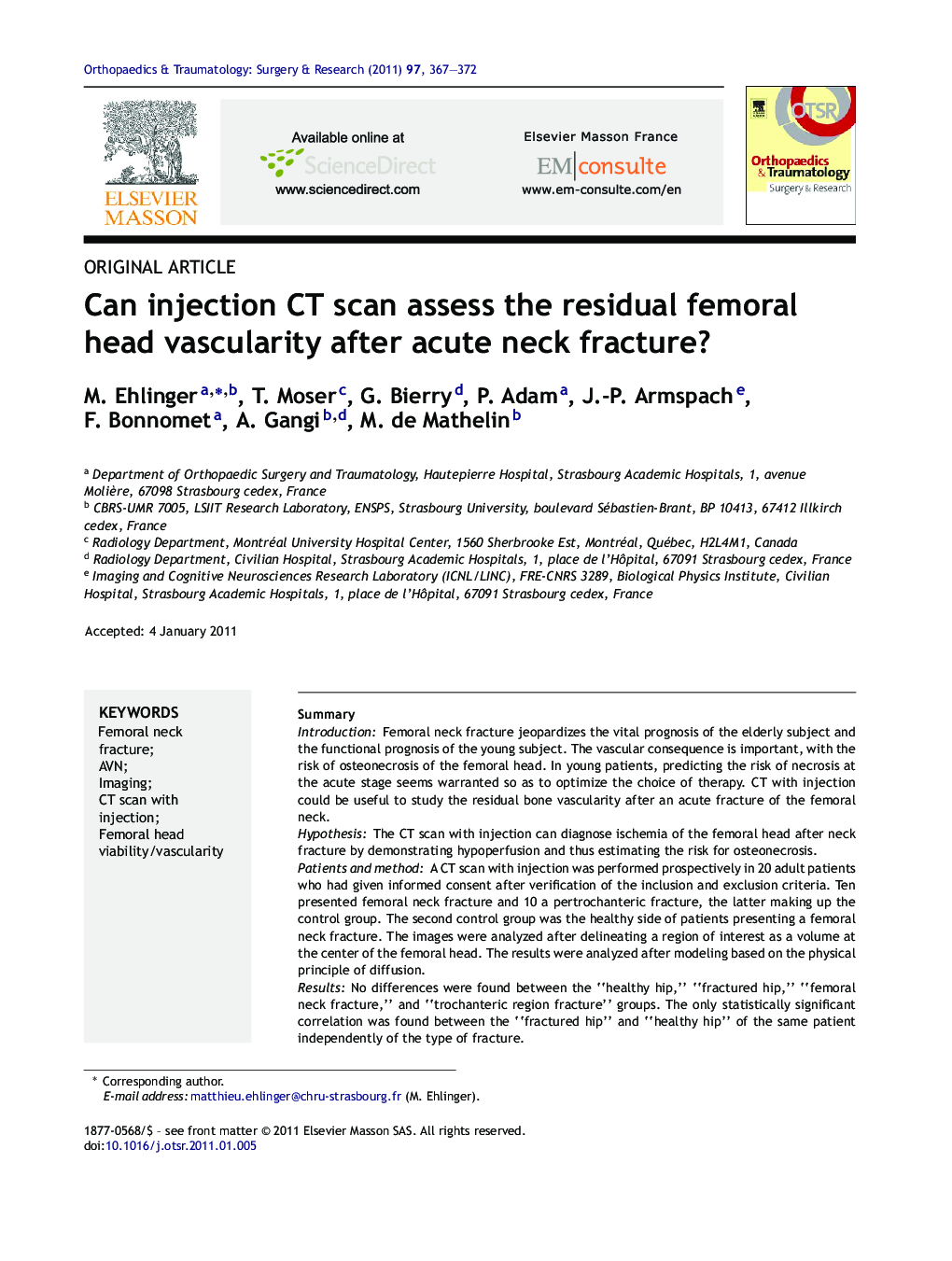| Article ID | Journal | Published Year | Pages | File Type |
|---|---|---|---|---|
| 4082158 | Orthopaedics & Traumatology: Surgery & Research | 2011 | 6 Pages |
SummaryIntroductionFemoral neck fracture jeopardizes the vital prognosis of the elderly subject and the functional prognosis of the young subject. The vascular consequence is important, with the risk of osteonecrosis of the femoral head. In young patients, predicting the risk of necrosis at the acute stage seems warranted so as to optimize the choice of therapy. CT with injection could be useful to study the residual bone vascularity after an acute fracture of the femoral neck.HypothesisThe CT scan with injection can diagnose ischemia of the femoral head after neck fracture by demonstrating hypoperfusion and thus estimating the risk for osteonecrosis.Patients and methodA CT scan with injection was performed prospectively in 20 adult patients who had given informed consent after verification of the inclusion and exclusion criteria. Ten presented femoral neck fracture and 10 a pertrochanteric fracture, the latter making up the control group. The second control group was the healthy side of patients presenting a femoral neck fracture. The images were analyzed after delineating a region of interest as a volume at the center of the femoral head. The results were analyzed after modeling based on the physical principle of diffusion.ResultsNo differences were found between the “healthy hip,” “fractured hip,” “femoral neck fracture,” and “trochanteric region fracture” groups. The only statistically significant correlation was found between the “fractured hip” and “healthy hip” of the same patient independently of the type of fracture.DiscussionThe results do not confirm the working hypothesis. This study was mainly limited by the small number of patients included, but this did not substantially effect the study's conclusions. According to the results, it seems that this study provided a CT evaluation of bone mineral density. At the end of the study, it seems that CT with injection is not well adapted in assessing residual femoral head vascularity or estimating the risk of progression towards avascular necrosis. According to the literature, only dynamic MRI with injection seems to be effective in this assessment and estimation.Level of evidenceLevel III prospective comparative diagnostic.
